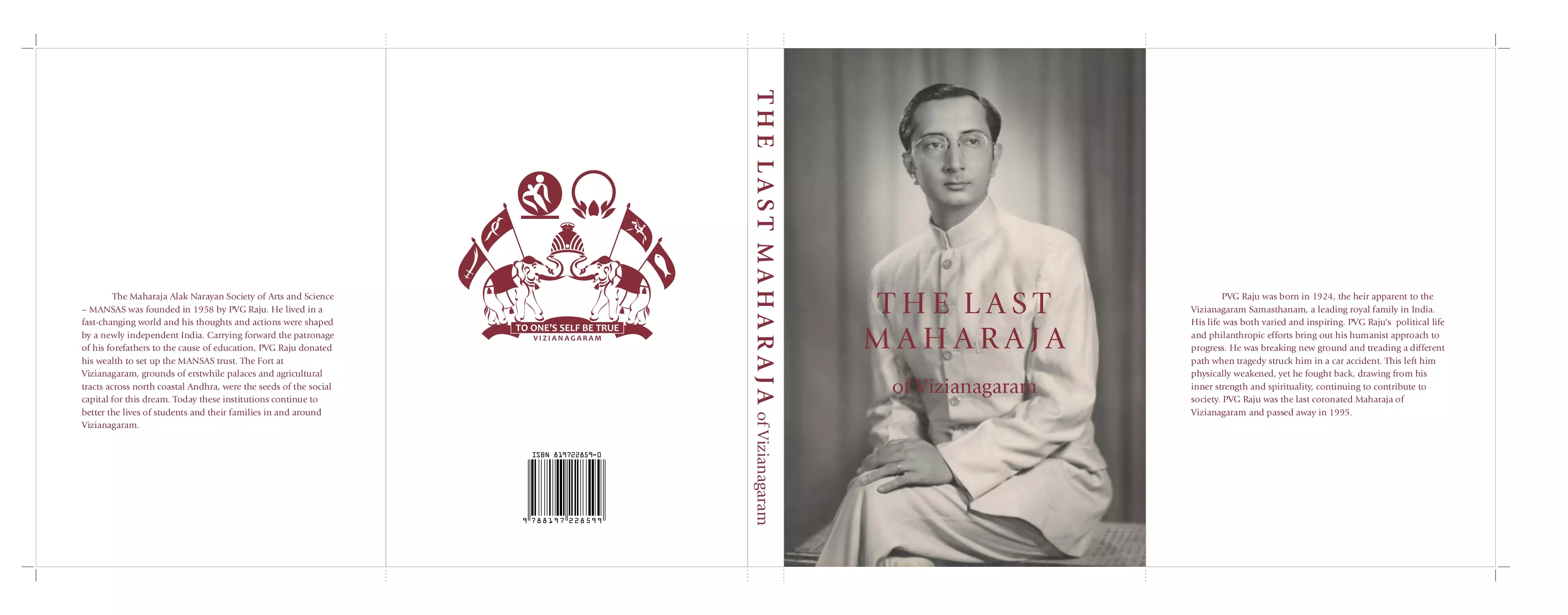Book Review | PVG – A true socialist with ‘rich’ thoughts
May 1, 2024 marks the birth centenary of the last crown prince of Vizianagaram, Maharaja Pusapati Vijayram Gajapati Raju

Pusapati Vijayram Gajapati Raju, the “The Maharaja of Vizianagaram", popularly known as PVG and reverently called ‘Raja Saheb’, was born on May 2, 1924 at the Phool Bagh Palace in Vizianagaram. He grew up to be a prince among democratic socialists and a democratic socialist among the princes.
Marking the centenary, MANSAS (Maharaja Alak Narayan Society of Arts and Science) – the family educational trust he founded in 1958 – is releasing a book comprising photographs/paintings and achievements of the true socialist and a commoner prince, and has called for observance of his birth centenary. The book also delves deep into some of the unknown aspects of the illustrious life of the socialist who gave the bulk of his inheritance to a trust for public causes.
Early life
PVG was the eldest son of Maharaja Alak Narayana Gajapati and Maharani Vidyavati Devi. He was taught by pundits attached to the royal court and an English tutor, Bardswell, before he joined the St. Aloysius Convent School in Visakhapatnam in 1933. He studied at the Central College, Bengaluru (then Bangalore) between 1940 and 1942 and in 1942 joined the Presidency College, Chennai (then Madras). In 1942, he joined Columbia University, New York, Eisenhower and Richard Nixon who were to later become the presidents of the USA were at that time president and vice-president respectively of Columbia University.
His accession to the Vizianagaram throne was in August 1945. PVG was deeply influenced by Mohan Kumaramangalam, Jayaprakash Narayan and Rammanohar Lohia. Along with Lohia, he was arrested and imprisoned for 45 days in the Purnia district in Bihar for leading a no-tax campaign of the farmers of Bihar and also arrested in AP leading a protest demonstration on behalf of the displaced persons of the Nandikonda project when prime minister Jawaharlal Nehru came to lay the foundation stone for that project in Mahanandi.
In the lap of luxury
Here was a boy born in the lap of luxury in one of the most important families of South India, destined to be a ruler of vast territories but at the age of 13 have to see the ignominy of his father being stripped of power for opposing the British crown. PVG went on as an adolescent living a life of luxury for a few years – with access to unfathomable wealth with no real responsibilities, enjoying all the good things life had to offer – owning race courses , playing cricket, golf and moving in high society. Yet somewhere there was a discomfort with all of these trappings – an inkling that there must be a higher purpose in life.
Social spirit
PVG founded the Maharaja Alak Narayan Society of Arts and Science (MANSAS) in 1958 in memory of his father for the promotion of education. He donated almost all his properties to the trust. He had also donated liberally to Andhra University of which he served as pro-chancellor for some years.
He was the hereditary trustee of the Simhachalam temple and over 100 other temples in his former estate. He purchased the Korukonda Palace and the 1000 acres of land surrounding it from his uncle for `5.5 lakh and donated it to the Central government for establishment of the Sainik School. He was instrumental in introducing a degree course in Ayurveda. Umpteen institutions dedicated to varying areas from research to religion. Andhra historical research society, Rajahmundry of which he was a patron, Sri Aurobindo ashram of Pudicherry of which he was the hereditary trustee received his munificence.
Political innings
His socio-political innings attained a new dimension when he entered the AP Assembly.
In 1952, he was elected to the Andhra Pradesh Legislative Assembly as a social candidate from the Vizianagaram Constituency.
In 1955, he was returned from the same constituency to the AP Assembly.
In 1957, he was elected to the Lok Sabha from the Visakhapatnam Constituency as an independent candidate.
However, in the same year he was elected to the Andhra Pradesh Legislative Assembly from the Bheemunipatnam Constituency, in a byelection, as a Congress candidate.
In 1962 and 1967, he was successfully returned to the AP Assembly from the same constituency. In 1971, he was elected to the Lok Sabha as an independent candidate from the Visakhapatnam constituency.
In 1977, he represented the Bobbili parliamentary constituency as a Congress candidate.
Thus in all, he contested nine elections – five times to the legislative assembly and four times to the Lok Sabha and always returned with a convincing majority.
He survived a near-fatal accident in May 1964. The car in which he was travelling to the Bhakra Nangal dam overturned and he sustained a severe head injury. Having fulfilled all these worldly obligations in a positive way, he passed away on November 13, 1995.

